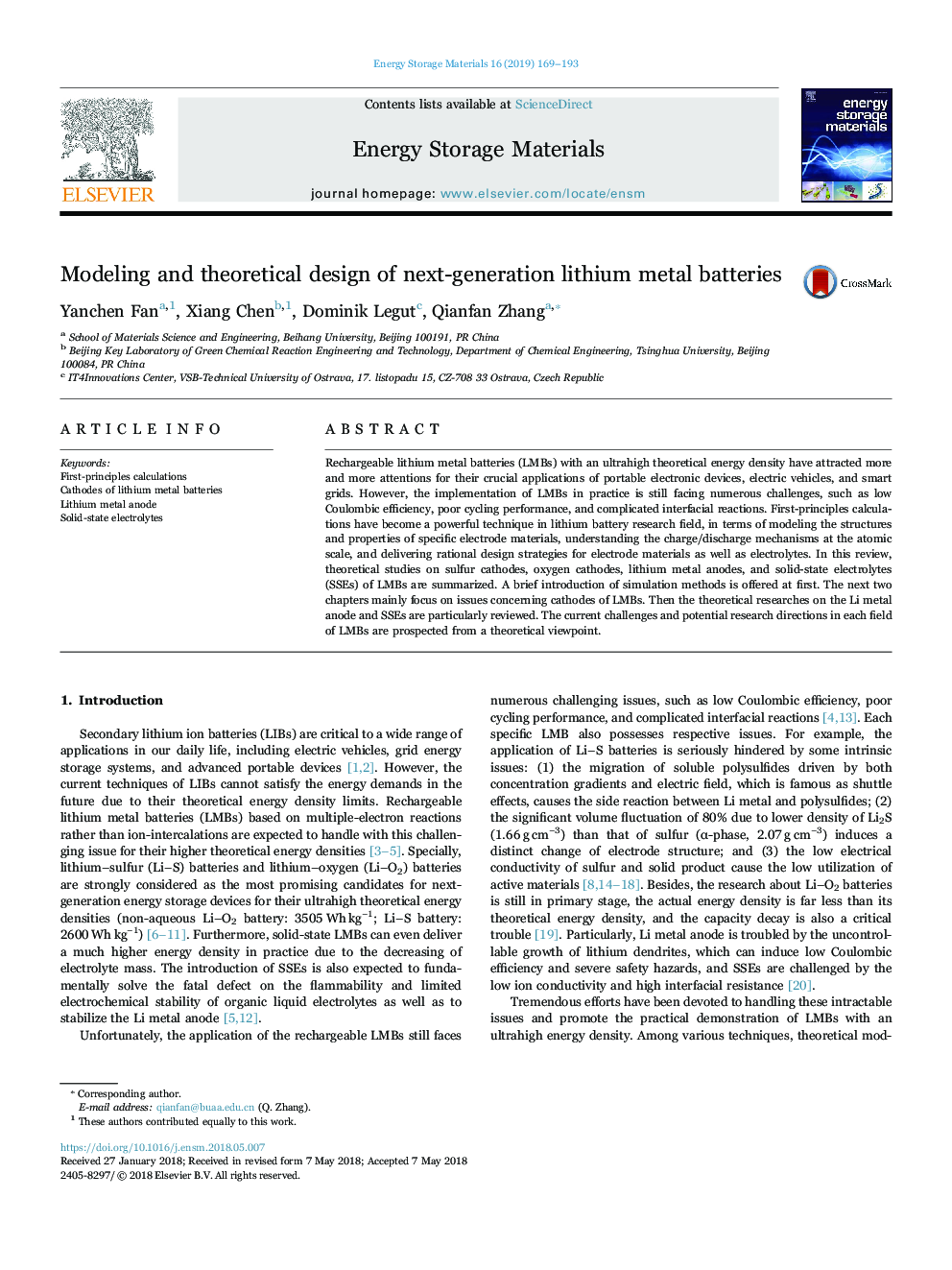| Article ID | Journal | Published Year | Pages | File Type |
|---|---|---|---|---|
| 7962279 | Energy Storage Materials | 2019 | 25 Pages |
Abstract
Rechargeable lithium metal batteries (LMBs) with an ultrahigh theoretical energy density have attracted more and more attentions for their crucial applications of portable electronic devices, electric vehicles, and smart grids. However, the implementation of LMBs in practice is still facing numerous challenges, such as low Coulombic efficiency, poor cycling performance, and complicated interfacial reactions. First-principles calculations have become a powerful technique in lithium battery research field, in terms of modeling the structures and properties of specific electrode materials, understanding the charge/discharge mechanisms at the atomic scale, and delivering rational design strategies for electrode materials as well as electrolytes. In this review, theoretical studies on sulfur cathodes, oxygen cathodes, lithium metal anodes, and solid-state electrolytes (SSEs) of LMBs are summarized. A brief introduction of simulation methods is offered at first. The next two chapters mainly focus on issues concerning cathodes of LMBs. Then the theoretical researches on the Li metal anode and SSEs are particularly reviewed. The current challenges and potential research directions in each field of LMBs are prospected from a theoretical viewpoint.
Related Topics
Physical Sciences and Engineering
Energy
Fuel Technology
Authors
Yanchen Fan, Xiang Chen, Dominik Legut, Qianfan Zhang,
